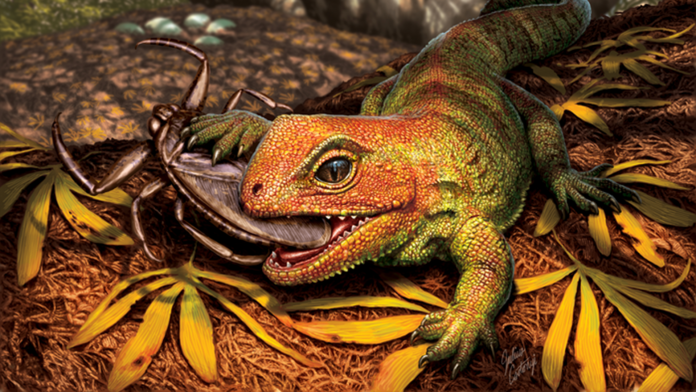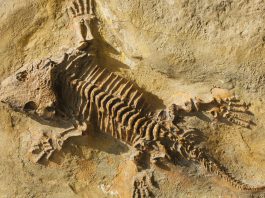Researchers from Smithsonian have discovered a new extinct species of reptile that inhabited North America during the Jurassic age.
The reptile is described by scientists as Opisthiamimus gregori and is named after Natural History Museum volunteer Joseph Gregor, who caught the scientists’ eye after he spent hours scraping the bones from a block of stone.
The reptile lived alongside dinosaurs like the Stegosaurus and Allosaurus. Its closest living relative was found to be the tuatara, which inhabits New Zealand.
The tuatara looks similar to an iguana but is not actually a lizard. They are, in fact, rhynchocephalians, a species whose origin goes back more than 200 million years.
“What’s important about the tuatara is that it represents this enormous evolutionary story that we are lucky enough to catch in what is likely its closing act,” said Matthew Carrano, curator of Dinosauria at the National Museum of Natural History.
Tracing the reptile’s history
Published in the Journal of Systematic Palaeontology, research claims the reptile measured 16 inches from nose to tail and likely survived mostly on a diet of insects.
The extinct species was discovered through a number of specimens, including a well-preserved fossil skeleton excavated from an Allosaurus nest in Wyoming.
The creatures were discovered to be rhynchocephalian like the tuatara, an order that diverged from lizards at least 230m years ago. If studied further, this specimen could explain why the reptile was diverse and numerous in the Jurassic but is now an extinct species.
The fossil of the extinct reptile is almost complete, with the exception of the tail and part of the hind legs. Such a complete skeleton is rare for an extinct species such as this, because they have frail bones that were either destroyed before they fossilised or eroded in the present day.
Because of this, scientists mainly study the reptile’s jaw and teeth. David DeMar, research associate at the National Museum of Natural History, used high-resolution technology to take multiple x-ray images to create a three-dimensional representation of the extinct species.
The reconstructed three-dimensional skull provides researchers with a detailed image of the extinct reptile’s skull, which helped them to discover what the creature may have eaten. Given its diminutive size, tooth shape and skull, DeMar concluded that the reptile likely ate insects, particularly prey with harder shells such as beetles or water bugs.
The extinct species’ skull essentially looks like a miniature version of its only surviving relative, the tuatara, which is about five times longer.
“Such a complete specimen has huge potential for making comparisons with fossils collected in the future and for identifying or reclassifying specimens already sitting in a museum drawer somewhere,” DeMar said. “With the 3D models we have, at some point, we could also do studies that use software to look at this critter’s jaw mechanics.”
Further research needed
In the Jurassic period, rhynchocephalians were found worldwide, ranging in size and acted as fish hunters and plant munchers.
This evolutionary chasm between lizards and rhynchocephalians helps explain the tuatara’s odd features such as teeth fused to the jawbone, a unique chewing motion that slides the lower jaw back and forth like a saw blade, a 100-year-plus lifespan and a tolerance for colder climates.
However, scientists are yet to understand why rhynchocephalians began to disappear as snakes and lizards became more common across the globe.
The fossil is being retained by a collection of museums so scientists can perhaps discover why it is a mostly extinct species and the tuatara is all that remains of the rhynchocephalians, while lizards are now found across the globe.
“These animals may have disappeared partly because of competition from lizards but perhaps also due to global shifts in climate and changing habitats,” Carrano said.
“It’s fascinating when you have the dominance of one group giving way to another group over evolutionary time, and we still need more evidence to explain exactly what happened, but fossils like this one are how we will put it together.”





